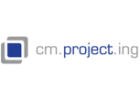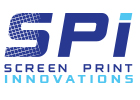The energy consumption of production equipment has always been an important topic. For glass processors, this topic has become even more urgent over the past year due to rising energy prices.
Tempering is one of the most important processes in a glass processing factory – glass is tempered to increase safety, strength and durability of the end product. In order to create the many advantages that tempered glass provides, glass needs to be heated to over 600 °C and cooled rapidly back to handling temperature. When looking for ways to save energy in a glass processing factory, a tempering line often offers significant potential for improving energy efficiency. And modern technological solutions offer effective solutions to increase the energy efficiency of the tempering process – whether it’s by investing in a completely new line or upgrading part or parts of the line.
If you’d like to learn more about the energy consumed during glass tempering, check out this animation explaining it in more detail.
Energy consumption in tempering is a complex topic. Thus, when considering a new piece of equipment, you may receive a lot of misleading information. This older Glastory blog post discusses one such example. It reminds us to always look for the basis of the energy consumption figures provided.
Next, let’s focus on some practical tips to help you save energy in the tempering process. In many cases, you can also do a lot to use your existing equipment more efficiently.
1. Increase loading efficiency
Increasing loading efficiency is an easy way to decrease the needed energy per square meter processed. Mainly the benefit comes from the quenchig side. Traditionally as a rule of thumb, quenching a small piece of glass takes roughly the same amount of energy as quenching a full bedload of glass. Therefore, loading more glass in each bed is an efficient way to decrease energy consumption. With recent technologial solutions, it is also possible to decrease the needed quenching energy consumption when running smaller than full loadings, but this would of course require hardware changes to the line as well.
Especially with older tempering lines, the tradeoff of increasing loading efficiency can be a possible decline in end product quality. This is because different types of glass need different processing parameters, and older-generation lines provide no way to achieve targeted temperature control.
Modern tempering lines with advanced heating control are the easiest way to increase loading efficiency without sacrificing quality. Alternatively, modernizing an older line can help achieve significant improvements without investing in a completely new tempering line. And with recent technological solutions it is also possible to optimize quenching energ
And if you’re able to optimize your process to achieve higher loading efficiency, you’re gaining extra capacity as an additional benefit.
2. Optimize your tempering level
Making sure your tempering process is optimized is an easy step to more energy-efficient operations.
Check the glass fragmentation level. Typically, the required fragmentation is 40 cullets in a 5 x 5 cm glass area. In practice, many glass processors have more than double this amount. This means the glass is either heated or cooled too much during tempering, which leads to wasted energy during the process.
Note that it is very important to still ensure a sufficient level of tempering. After all, glass stress level – the basis for fragmentation – is the most important safety factor in tempered glass. But having a 30% buffer instead of a 100% one can save a significant amount of energy.
3. Modernize your existing line – gain many of the benefits of today’s technology
If you already have a tempering line that runs well but is not very energy efficient, it may make sense to consider upgrading.
This approach extends the lifetime of your line, reduces energy consumption and increases processing capabilities in general. Some modernizations that help save energy are:
Installing inverters. If your quenching blowers don’t have inverters, make sure to have them installed. This investment pays back in a very short time.
Blower and quenching technology. Latest-generation blower and quenching technology save significant amounts of energy, especially with thin glass production.
Furnace modernization. This can help you achieve higher loading efficiency as well as reduce energy losses during the process. Furnace modernizations are available for any tempering line, regardless of the original manufacturer.
Automation. Process automation upgrades can help achieve better overall efficiency, quality and output. It’s also a good way to ensure that your tempering process is as efficient as possible with your current line.
Measurement. Measuring for example the glass temperature with a thermal scanner and automatic estimation of the achieved glass stress and fragmentation level provide excellent tools for optimizing energy consumption.
4. Invest in a completely new tempering line – ensure that your energy efficiency is on the highest level possible
If you are looking for a completely new tempering line, you are in a great position to ensure that you are taking full advantage of the possibilities enabled by modern technology.
Optimized for your needs.
Choose the most optimal heating technology for your production needs
Optimize your cooling technology based on the needs set by your production mix
Cutting edge automation. Leave process control in the hands of automation – energy consumption, quality and capacity will always be automatically optimized based on the production situation at hand
A modern line will help you to understand all the factors of your production automatically – for example glass stress levels, fragmentation, energy consumption and quality
Summary
This past year’s events have accelerated the need for more rational energy usage and provided a new opportunity to transfer to more eco-responsible production.
Especially when it comes to energy-intensive industrial processes, even a minor improvement can result in considerable energy savings.
We don’t know how long the latest energy crisis will be with us. But we know that there are multiple ways to make our operations more efficient – and also sustainable – for years to come.

























